Kunal Gupta's Blog, page 3
June 8, 2025
How to Coldplay
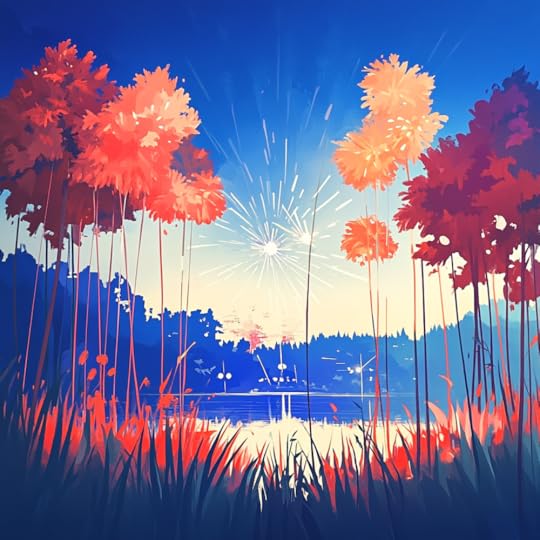
The sun was still up. The crowd was already here. And yet there was a strange sense of quiet.
Fifty thousand people in a stadium, but something delicate lingered in the air—a shared anticipation. It wasn’t loud, it wasn’t rowdy. It was… still. Like the moment before a wave crests. A stillness at the edge of something about to begin.
I haven’t been much of a concert-goer. At least not until recently. But over the past few months, several people had recommended this particular performance. And when the opportunity came to see Coldplay live, I said yes—not out of fandom, but out of curiosity.
Walking through the gates of Stanford Stadium, the energy was nearly tangible. Almost ceremonial. A kind of collective readiness, not just for music, but for mood, for moment.
We found our seats. And then before long, the lights shifted, the first chords struck, and everyone jumped to their feet—where we would stay for the rest of the show. There were lasers. There were wristbands that flickered in perfect sync with the sound. Fireworks erupted behind the stage. It was, in every sense, a spectacle. And yet amid the theatrical, something simple emerged.
I felt present.
Not the kind of presence that tries hard to block out distractions. Not the kind of presence that meditates its way into awareness. This was effortless. It just… was.
I wasn’t thinking about the messages I hadn’t replied to. I wasn’t wondering what time it was. I wasn’t reflecting on who I was supposed to be. I was there—feeling the vibrations underfoot, the cheers overhead, the music weaving through it all. Surrounded by strangers, yet attuned to everything at once.
And I couldn’t help but notice the contrast.
So much of life lately has been lived through a screen. Hours spent behind it, staring into sterile light, much of it in conversation with artificial intelligence. It’s remarkable what these tools can do. How quickly, how accurately, how endlessly.
But not how it feels.
This—this was something else entirely. Something irreducible.
In this past year, I’ve found myself drawn toward more shared experiences—live ones. Whether it was watching tennis at the Australian Open or attending events at the Paris Olympics, I’ve come to realize how little I remember of the specifics. I couldn’t tell you who won a medal. Couldn’t share the final score of the match. I can’t even name the lead singers of Coldplay. Or their songs. Or recite a single lyric.
But I can tell you how I felt.
Surprised. Moved. Light. Alive.
That’s what I’ve remembered from all these moments. Not the facts. Not the who or what or how long. Just the feeling. The texture of emotion that settled into memory long after the event was over.
It reminded me of something I’ve come to believe: that it’s not the content of a moment that makes it meaningful. It’s the emotional imprint it leaves behind.
A conversation with a friend. A bite of something delicious. A sentence in a book that lingers long after the page has turned. A walk in familiar light that somehow looks different on a new day. These small, ordinary things—when felt deeply—become significant. Not because they last. But because they’re felt.
In a world obsessed with permanence, emotion remains beautifully fleeting. Impossible to download, catalog, or summarize. Which may be the point.
There was something ancient in that stadium. Something human. It wasn’t just a band playing songs. It was a sea of people feeling something all at once, without needing to name it. An unrepeatable choreography of sound, light, and shared presence.
That night, I couldn’t take much away with me. I had no setlist. I had no photos. But I had emotion—undeniable and vivid—and that seems to be enough.
And that is how I learned to Coldplay.
May 31, 2025
How to New York
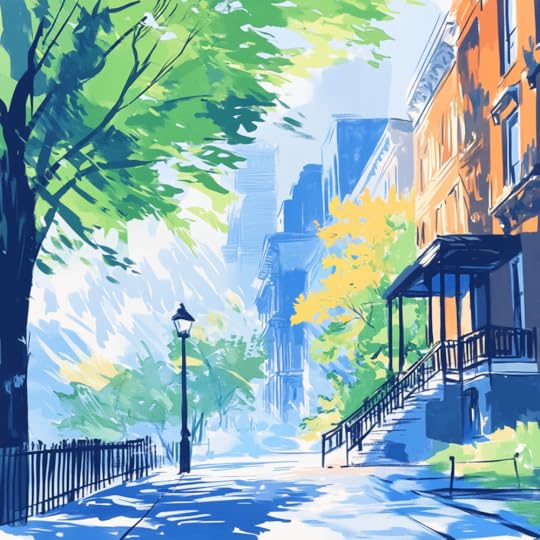
I was in New York last week for the first time in five years. Before the pandemic, I had lived there—on and off—for nearly a decade. It was the kind of place I kept returning to, in part because it never stopped moving.
But this time was different.
I was visiting with my partner, walking the streets I once called home, pointing out buildings I used to live in, cafes I used to frequent, corners where memories once unfolded. The city looked much the same. But I didn’t.
There’s something I’ve always believed about landmarks. They don’t change so that we can see how we have. There’s a quiet generosity in that. When everything around me stays still, I notice the movement within.
Being back in New York, surrounded by the same skyline, the same subway stations, the same rush of energy, I was confronted with just how much I’ve changed in five years.
New York has always been a mirror for me.
Not the kind that reflects how I appear, but who I am—or who I was. There’s something about the city that makes it possible to hold many versions of yourself at once. The one who arrived wide-eyed and hopeful. The one who left burnt out and disillusioned. The one who wandered through it in love. The one who tried to belong. It’s a city that doesn’t ask for consistency. Instead, it offers a kind of permission—to become, to reinvent, to try on different selves without explanation.
I’ve been thinking a lot about identity since that trip. About how some places shape us, while others reflect us. And about how rare it is to find a place that does both.
In most environments, we adapt to what surrounds us. We become who we need to be to fit in, to survive, to succeed. But New York feels different. It contains so many possibilities that it doesn’t force a single one. Everyone is becoming someone there, and no one seems to mind who that is.
Still, nostalgia has its edges. Walking through old neighbourhoods brought a mix of comfort and discomfort. I remembered who I was the last time I was there—and what I didn’t yet know. There was a tenderness in those memories, but also a kind of grief. Grief for the version of myself who no longer exists. Gratitude for the one who does.
I noticed something else, too—my knees. Within a day of arriving, they started to ache. Not terribly, just enough to get my attention. I was walking faster than I had in years, the city pulling me into its rhythm. I realized I didn’t want to move that fast anymore. Not just physically, but in other ways too. I no longer feel the need to rush toward achievement, to chase some version of myself I haven’t caught up to yet. The pace that once felt exhilarating now feels exhausting.
There’s something liberating about noticing that shift. It’s easy to mistake change for loss, or to feel nostalgia as something we need to resist. But I’m learning to see it differently. Revisiting old places, or old versions of myself, doesn’t mean trying to reclaim them. Sometimes, it’s just about recognising how far I’ve come—and letting that be enough.
Identity, I’m starting to believe, isn’t fixed. It’s layered. It’s shaped by place and time, by memory and movement. And it’s always in revision. I’m not who I was in New York five years ago. I don’t need to be. But I’m grateful for the chance to remember him—for the way he helped me become who I am now.
Change doesn’t always need a reason. Sometimes, it just needs space. And the right place to reflect it back.
And that is how I learned to New York.
May 23, 2025
How to Prompt

It happened quietly.
I was sitting with a friend who knows more about finance than anyone I know. The kind of person I used to turn to for questions I didn’t know how to answer. But that day, I didn’t ask. The question was still there, in the back of my mind. I just didn’t feel the need to say it out loud.
That’s when I noticed it.
Lately, I’ve been turning to AI more often than I care to admit. Not for everything—but for a lot of things. Questions about history, science, travel, recipes, taxes, investing. Questions that once lived on the edges of conversations now find their answers in the calm glow of a screen.
There’s something strangely comforting about it. No judgment. No hesitation. No interruption. Just space to ask anything, however naïve or obscure, and to keep going until things make sense.
It’s efficient. It’s convenient. And, if I’m honest, it feels safer than asking a person.
There’s a small shame in admitting that. A quiet embarrassment in realizing I sometimes trust the collective intelligence of the world’s human knowledge trained into a system, more than I trust the opinions of the people I know. Not because the people are wrong. Just because the machine never seems to mind when I ask again, maybe in a different way, trying to see if I get a different answer.
But something else has been happening too—something I didn’t expect.
As AI has taken on the role of explaining the world to me, I’ve found myself asking people fewer questions about what they know and more about how they feel.
I’m no longer as curious about where they went on their last trip, or how they booked their flight, or what restaurant they recommend. I can find that online. What I want to know now is what it felt like to be there. What changed in them. What stayed with them.
There’s a depth in emotion that no dataset can recreate. A texture in lived experience that no algorithm can imitate.
In the past, I may have believed we are logical beings who occasionally feel emotion. I’m not sure I believe that anymore. More and more, it seems to me that we are emotional beings who sometimes use logic to explain what we already feel.
In many of the circles I spend time in—professional, cerebral, head-oriented—so much energy goes into understanding. Into knowledge. Into the mind. It’s all very sharp. But it often feels like something is missing.
What’s missing is the part that doesn’t need to make sense.
The part that simply feels.
A chatbot can tell me what the economic indicators were during a financial crisis. But it cannot tell me what it felt like to lose a job, to call a parent for help, to wake up with dread for six months in a row and still try to smile at work.
A chatbot can give me ten ways to roast a cauliflower, ranked my nutritional value. But it cannot describe the smell in the kitchen, the memory it stirred, the pride in serving it to someone who didn’t expect to be moved by the dinner.
These days, I’m starting to ask different questions to the humans in my life.
Or sometimes, asking no questions at all—and just listening. Waiting for something deeper to emerge. Not the facts of someone’s story, but the feeling that shaped it. The emotion that lingers long after the logic has been explained away.
And in that space, I find inspiration.
That’s the word I chose for this year—inspire. Not to be impressive, but to be moved. To let something stir in me that I didn’t know was possible. And more and more, that stirring comes from presence, not answers.
I still use AI every day. Maybe every few hours. But when I’m with someone, I no longer need them to be informative. I just need them to be human.
And that is how I learned to prompt.
May 18, 2025
How to Friend

A few weeks ago, I sat down with a friend. I've known them for some time, long enough to notice the patterns in their struggles.
This particular evening, it was clear they were caught again in a familiar loop.
Initially, I felt a pang of judgment arise, quietly asking myself, "Is this someone I still want to spend my time with?"
I've long believed we are influenced by the company we keep. It's a quiet belief, not one that demands immediate action, but something I gently hold as true. As I listened to my friend speak, my internal voice started questioning the energy between us. Their challenges were heavy, and in that moment, uninspiring to me. I was unsure if this was a place I wanted to linger.
Yet, as we continued talking, I found my judgment softened, replaced slowly by a quiet curiosity.
The longer I stayed present, the clearer my friend's world became to me. I asked questions, wanting to understand the "why" beneath the repeating patterns. As their story unfolded, my own past experiences surfaced naturally, echoing in my memory. Soon, I found myself sharing my stories—stories of similar challenges, similar feelings, similar loops I'd known intimately.
As I spoke, an unexpected shift happened in my inner world.
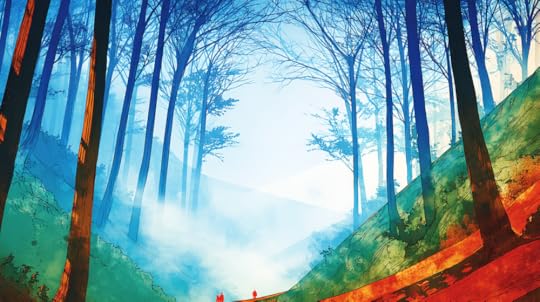
My judgment quietly turned inward. I recalled moments when I had been caught in the same loops, stuck and unable to break free. There was a flicker of self-criticism, but it quickly gave way to empathy. I genuinely understood my friend's place because I had occupied that very space myself. Compassion replaced curiosity, and soon I was invested in helping, motivated to offer the insights and strategies I wished someone had shared with me earlier.
We spoke deeply, vulnerably, honestly. By the end of the conversation, I felt energized, inspired by what we had uncovered together. What started as a hesitant encounter had transformed into something uplifting, rich with shared understanding.
In the days following, I found myself reflecting on that evening. My initial hesitation about spending time with my friend had been based on criteria that now felt superficial—how successful or positive or inspiring they were. But what I realized clearly was that the true measure of friendship isn’t about who my friends were externally. Instead, it is about who I am when I am with them. Did I like me in their company? Am I proud of how I show up? Am I energized or drained by my own presence?
This simple shift in perspective begins to illuminate many of my interactions.
Recently, returning to Lisbon and reconnecting with friends I haven't seen since last year, I've been quietly observing myself. How do I feel in their company? How do I show up? How present, curious, and authentic am I? It’s more about me than it is about them, surprisingly.

Friendship is an invitation to vulnerability precisely because the stakes are low. It's not transactional; there's nothing to achieve or prove. Friendship allows me to experiment with showing up fully, expressing myself honestly without the pressures of consequence. In this safe, gentle space, I can see clearly who I become around others. And in many ways, learn about myself, my thoughts and my feelings.
Lately, I've liked that person—the one who listens deeply, who responds with compassion, who shares openly, and who learns eagerly. The judgment I once felt toward others now gently redirects inward as a question: who am I becoming in this moment, in their company?
Friendship is less about choosing who is worth spending my time with and more about noticing how I feel around others. How I choose to show up shapes the space we share. I am gently observing and appreciating who I become when I'm with them.
And that is how I learned to friend.
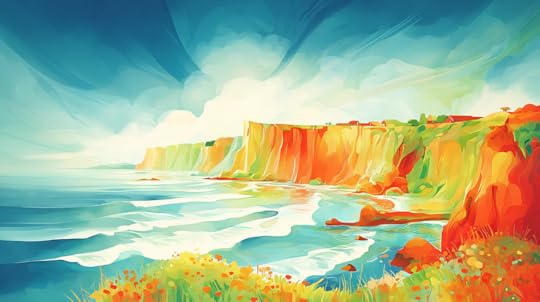
May 10, 2025
How to Become

It is Mother’s Day. And it is her birthday. A milestone one.
We are not in the same city. Not even the same country or continent. Yet in some ways, I feel closer to her now than I did when we lived under the same roof.
There is something that distance allows.
Without the logistics of presence—planning visits, checking in, trading updates—there is space for a different kind of reflection. I’m not thinking about what to gift her, or how to celebrate her. Instead, I find myself thinking about who she is, and how I’ve come to see her more clearly over time.
When I was younger, she was simply “Mom.”
Constant. Capable. The one who stayed up when I was sick, who planned birthdays, who made sure there was always food in the house and clothes in the closet. Her presence was so reliable that it became invisible. Like light. Like air.

I never thought to ask who she was before all of that. Before she was responsible for anyone but herself. Before she became the person I now know so intimately, but saw only in relation to me.
Over time, that has changed. Slowly, quietly, and without any one defining moment, I began to see her differently. I began to notice the woman behind the role. The quiet strength beneath her gentleness. The decisions she made that I never noticed, and the ones I may never know about. The way she has carried so much, and asked for so little.
There is so much she gave that she never named. So many moments of care that were never called out as love, and yet, that’s exactly what they were. She never told me what she sacrificed. She never asked to be acknowledged. And now, years later, I find myself trying to name what she never pointed to—because it matters more than I knew how to say.
I also see her in unexpected places now.
In how I move through the world. In how I respond when someone needs comfort. In how I wait before speaking. In how I try, often unconsciously, to create space for those around me. These are not lessons she sat down to teach. And yet, I learned them all the same.
There are moments when I hear her in my voice. Not because I am trying to sound like her. Simply because she is there. I notice her presence in my gestures, in my instincts, in the quiet ways I try to offer care. It’s not mimicry. It’s memory—etched not in thought, but in being.
We haven’t lived near each other in a long time. The frequency of our contact has changed over the years. But her influence hasn’t faded. If anything, it has become more visible, now that I’m far enough away to see the whole shape of it.
Sometimes, distance creates clarity.

I didn’t set out to become like her. I simply grew. And in growing, I discovered that much of who I am was formed by who and how she is. By how she lives. By what she models, even without meaning to. I used to think that gratitude was something I needed to express in words. But now I see that gratitude can also be something I live.
And maybe that is the most honest way to thank her. Not by saying it. But by becoming it.
And that is how I learned to become.
Happy Mother’s Day and Happy Birthday Mom.

May 3, 2025
How to Blackout

The lights went out.
My partner and I turned to one another, surprised. There was a flicker of excitement in the room, a quiet curiosity for what had just happened. No warning, no explanation—just sudden stillness.
It had happened once before, last summer in Lisbon, on a blistering hot afternoon. That time, the power had returned within twenty minutes. Our building’s generator had come to the rescue, restoring order before disorder had time to settle in.
This time was different. There was no generator. No return.
One hour went by.
Then two.
Then three.
At first, we continued on as usual. Reading the news. Messaging friends. We even called my sister in Canada to say hello. But soon, even those thin threads of connection faded. The cellular network went down. Our phones stopped working altogether.
There we were—overlooking the city of Lisbon, without power, without signal, without sound. The silence outside felt heavier than usual. Not the hush of night, but something unfamiliar. Something that made us pause.

A scene from a Netflix series came to mind. Robert De Niro in a story where a terrorist group orchestrates a one-minute global blackout—and the chaos that follows. The imagination didn't need much fuel to wander. There were echoes of lockdowns, old fears surfacing in new forms. And yet, despite the mind's tendency to forecast disaster, something else was happening, too.
A kind of joy had begun to take root.
With nowhere to go and nothing to do, we turned our attention inward. Not in meditation, not in theory—but in action. We began cleaning. Closets we hadn’t touched in a year were suddenly emptied. Cupboards were sorted. Items we didn’t remember owning found new places or were discarded entirely. It became a spontaneous spring cleaning—a ritual of care, of tending to our space.
We moved food from the fridge to the freezer, hoping to preserve what we could, just in case this stretched into days rather than hours. It felt practical, but also symbolic. Taking care of what we could, while letting go of what we couldn’t control.
Eventually, there was nothing left to clean.
So we sat on the couch.
And we talked.
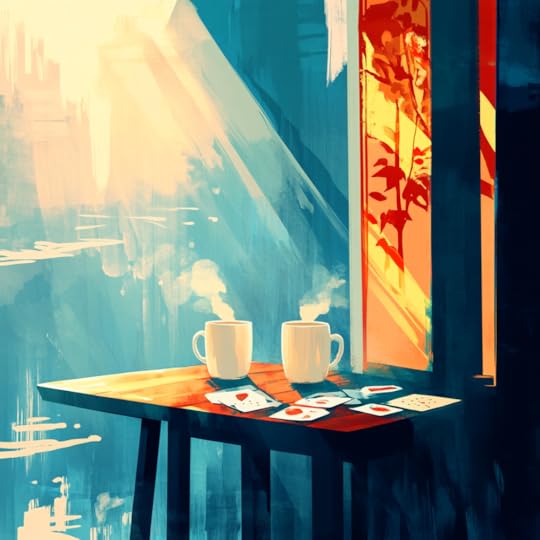
About the past. About the future. About how we were feeling, really feeling, not just the edited versions we sometimes trade in the midst of daily life. There was a level of presence between us that felt different. Not because we had made time for each other, but because there was no time left to fill. Nothing else called for our attention. No screens. No notifications. No tasks.
My partner said her mind felt more at ease. Lighter. As if something invisible had been lifted. The mental weight of always being connected had dulled so gradually over time, we hadn’t noticed it. Until it was gone.
No information to absorb.
No messages to reply to.
No one was waiting for anything.
Except the person sitting right in front of us.
We found our way to a game we both love—Monopoly Deal, a card game we rarely remember to play, despite how much we enjoy it. Candles were lit as darkness settled in. Our apartment transformed into something quieter, softer.
After nearly ten hours, we found ourselves still on the couch, still side by side, reflecting. It had been a beautiful evening. An unplanned invitation into presence. A reminder of something we had almost forgotten.
We both acknowledged it wouldn’t have felt the same if we were alone. Together, it became something shared. Intimate. Unexpectedly meaningful and memorable.
A part of us didn’t want the blackout to end. But beneath that hope was another truth—what we really wanted was to keep feeling this close, this present, this unencumbered.
We said we’d find ways to carry it forward. To carve out moments like this in our daily life. That was one week ago. Since then, the hours have filled up again. The pace has resumed. The intention, while genuine, has quietly faded.
Many cultures have long embraced their own form of blackout. Whether through rituals, sabbaths, or silent retreats, there is wisdom in choosing disconnection before it is forced upon us. I now understand why.
Disconnection, it turns out, is not the opposite of connection. Sometimes, it is the path to it.
As someone who delights in the new—gadgets, software, AI—I feel no conflict in also loving the moments when all of that slips away. It’s not about turning away from the world, but turning more fully toward it. In its simplest, most immediate form.
And that is how I learned to blackout.
If you are interested in keeping up-to-date on the latest in AI, subscribe now for Pivot 5, my AI newsletter here: pivot5.ai
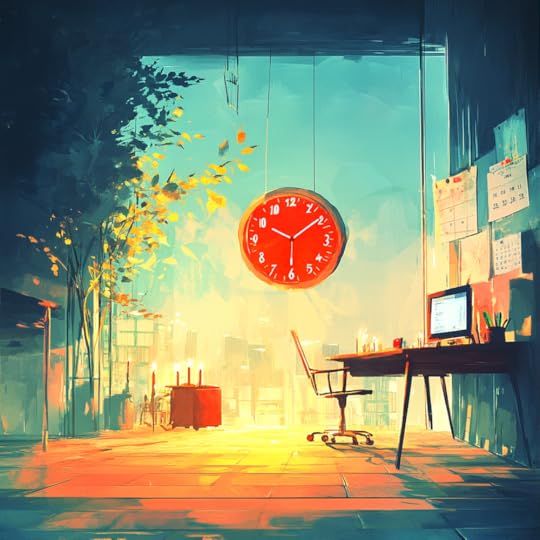
April 26, 2025
How to Start
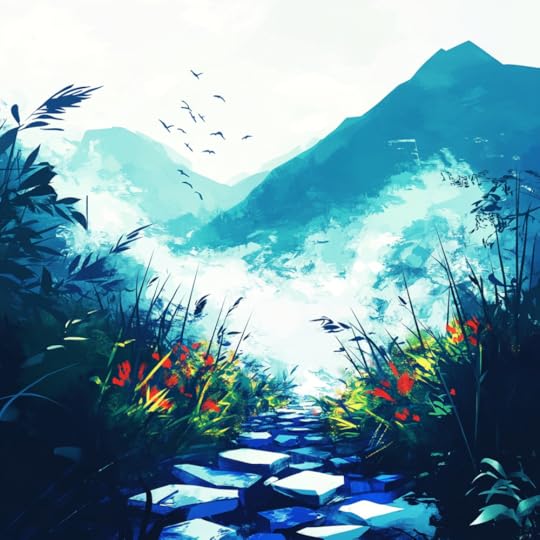
There is a certain kind of weight that does not show itself on the surface. It lingers quietly, pulling gently at attention. Some days it feels light enough to ignore. Other days, it hums in the background, asking to be noticed.
For the past month, I carried the simple desire to refresh the website for Pivot 5, my AI newsletter. It was a small project. Something I thought about almost daily. Each time I met someone new and wanted to share the newsletter, I found myself pulling up the old site, feeling a small, familiar discomfort. A reminder that there was something unfinished. Something waiting.
I kept telling myself it was a quick task. I kept not doing it.
Yesterday, somewhere between East Asia and Western Europe, sitting on a long-haul flight, I opened my laptop. There was a rare feeling of determination. No fanfare, no special plan. Just a small window of willingness. I connected to the airplane wifi, opened a blank page, and began.

Within forty-five minutes, the new site took shape. Nothing complicated, nothing revolutionary. Just simple, clear, and — for now — enough.
After I hit publish, I closed my laptop and pulled out my journal. I sat with the question: why had this felt so heavy for so long?
It wasn’t that the work was hard. It wasn’t the time it would take. It wasn’t even the skills involved. The real weight had lived elsewhere — in the mind, not the hands.
There is a difference between cognitive load and physical load. Physical effort is easy to spot. Muscles tire. Limbs ache. But cognitive effort is quieter. Decisions accumulate. Doubts pile up. Expectations build until even the simplest task feels like a mountain.
For this website refresh, the cognitive load was heavier than the task itself. Every time I thought about doing it, I imagined all the decisions that would need to be made. What to say. How it should look. How it might be received. Somewhere beneath it all, a perfectionist voice whispered that it needed to be great, not just good enough. That if I wasn’t ready to nail it, I shouldn’t even start.
It is not lost on me how often this pattern repeats itself. The things that weigh the most are rarely the things that require the most physical energy. They are the ones that ask for emotional courage, for the willingness to face uncertainty.
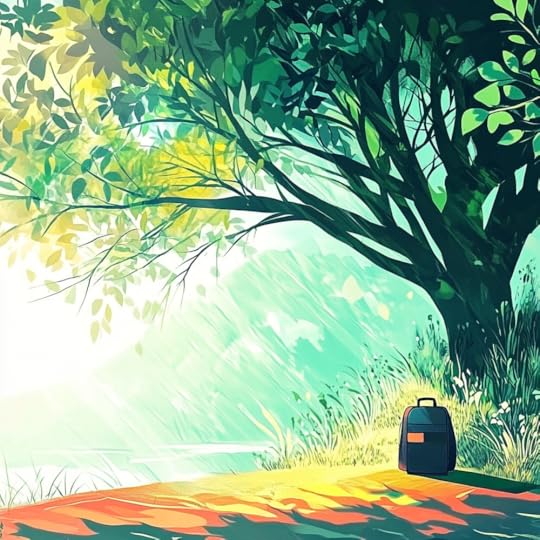
In other areas of life, I have found ways to ease this burden.
I love attending yoga classes, even though I could easily practice at home. I often work out with a trainer, not because I don’t know what to do, but because it feels lighter to follow. For years as a CEO, and even now working independently, life has required a kind of constant self-leadership. Always deciding, always setting the direction. There is a certain fatigue that comes from always leading, even if only oneself.
Sometimes, it feels good to let someone else guide the way. To follow a recipe rather than invent one. To ask ChatGPT even the most basic of questions, just to lighten the load. To not have to figure everything out alone.
There is a certain conservation of energy that happens when the cognitive load is shared, even slightly.
Starting is often the hardest part. The mind can inflate the difficulty of beginning into something monstrous, while the body waits patiently, ready to act. Resistance grows in imagination, but shrinks in the doing.
The experience on the flight reminded me that conserving energy is not always about becoming stronger or pushing harder. Sometimes it is about creating conditions that make important work feel lighter. Reducing friction. Building systems of ease. Lowering the cognitive cost of beginning.
It also reminded me to have compassion for the parts of myself that hesitate.
The part that delayed the website refresh was not lazy or careless. It was cautious. It cared about getting it right. Sometimes, delay is not resistance but a quiet form of protection — an attempt to preserve energy for when it might be most wisely spent.
There are no simple answers here. Only open questions. How to recognize when to push through resistance, and when to listen to it. How to distinguish between the heaviness that protects and the heaviness that holds back. How to create more conditions where beginning feels lighter, and more days where the work flows without force.
The energy to live, to create, to move forward — it is precious. Perhaps conserving it is not about holding it tightly, but about learning how to spend it wisely, and how to trust that sometimes, even the heaviest things are lighter than they appear.
And that is how I learned to start.
If you are interested in keeping up-to-date on the latest in AI, subscribe now for Pivot 5, my AI newsletter here: pivot5.ai
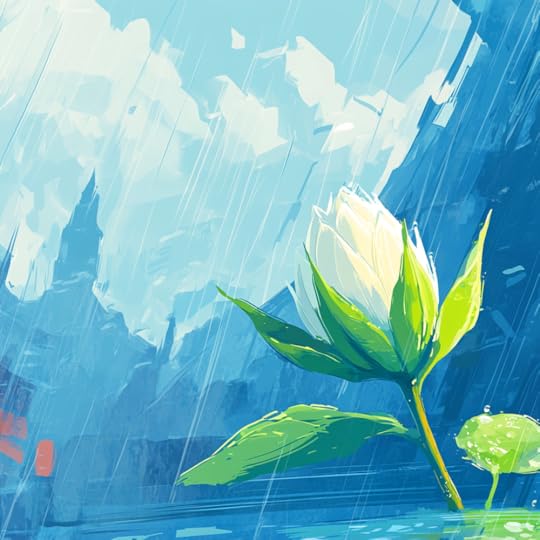
April 18, 2025
How to Anything
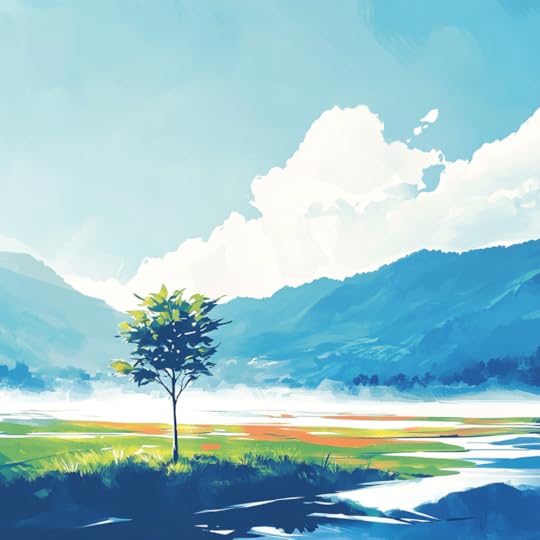
For a long time, I believed I could do anything. It was a belief that served me well. It gave me permission to dream. To try. To say yes before knowing how.
I have long approached the world with the quiet confidence that, with enough effort, energy, or intention, anything was possible.
And then, I tried to do everything.
Especially in business, I fell into that trap—believing that since we could do anything, then we must do everything.
Why not chase every idea, pursue every opportunity, take on every client, build every product? I told myself it was ambition. I told myself it was vision. But over time, I realized it was noise.
When everything matters, it becomes hard to tell what really does.
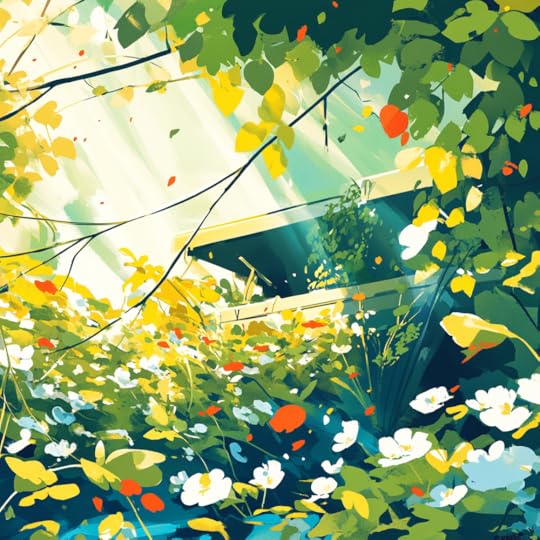
It wasn’t sudden. There was no single moment of collapse or crisis. Just a slow, growing awareness that the energy I was spreading across many things was leaving us with little depth in any one of them.
I was always moving, but rarely arriving. And the more we did, the harder it became to explain—to myself and to others—what we were really about.
I didn’t want to choose. That’s what made it so hard. Choosing meant closing doors. It meant letting go of ideas that were exciting, even if they weren’t essential. It meant acknowledging that time, energy, and attention are finite. It meant growing up.
We’re often told a story that anything is possible. But what that story leaves out is that everything is not.
That’s the quiet truth at the heart of this reflection.
We can do anything. But not everything.
Tradeoffs are not something I was eager to embrace. For years, I saw them as compromises. As limits. As what happens when things don’t go to plan. But I’ve started to see them differently. Tradeoffs are not signs of failure. They are signs of choosing.
Choosing what to focus on is not a weakness. It’s a kind of wisdom. It’s a way of celebrating and deciding what matters most right now, even if it means setting aside things that also matter—just not right now.

There’s a cultural pressure. The quiet—but constant—messages that more is better. That success looks like expansion. That if I say no, I’m missing out. Falling behind. Thinking small.
I’ve felt that pressure. I’ve internalized it. And I’ve seen how easily it can pull me away from my own intuition.
But there is something deeply grounding in making tradeoffs with intention. In not just reacting to what’s urgent, but returning to what’s essential. In being honest with myself about what season I’m in, what I can hold, and what I need to put down, for now.
It reminds me of pruning. Cutting back not because something is dead, but because I want something else to grow. Tradeoffs can feel harsh in the moment. But over time, they create the space for depth. For clarity. For flow.
These days, I try to make tradeoffs from a place of alignment rather than fear. When I’m afraid, I say yes too often. I chase too many things. I try to prove too much. But when I’m grounded, I can feel what’s mine to do—and what isn’t. And I can make those choices more gently.
Sometimes, I still resist. I still fall into the temptation of doing more. Saying yes to everything can feel good—until it doesn’t. Until I find myself tired, scattered, or unsure of what I’m really working toward. That’s usually when I remember to pause. To step back. To ask a quiet question that has become a kind of compass: what matters most right now?
That question doesn’t give me certainty. But it helps me listen. It helps me notice what I’m holding onto, and what I might be ready to release.
I still believe I can do anything. But now I know that doing anything means choosing. It means being okay with not doing everything. It means trusting that every time I let go of something, I am making space for something else to emerge.
And that is how I learned to anything.
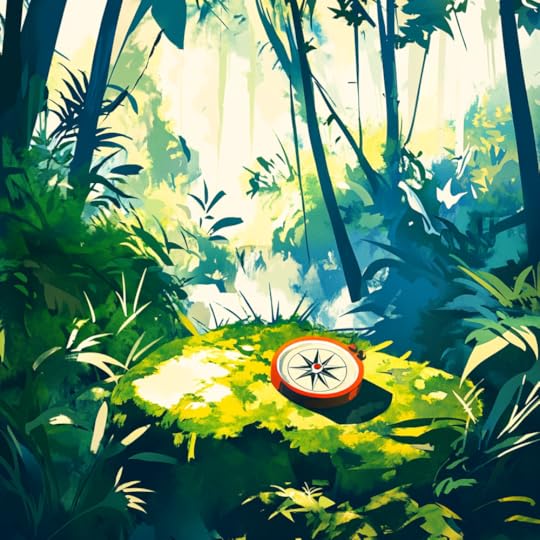
April 9, 2025
How to Learn

A few minutes after I finished giving a talk on AI trends last week, as the audience began to disperse and the noise in the room started to fade, a young man approached me.
He was quiet, maybe a little nervous, and had waited until the crowd had thinned before stepping forward. He was the only university student in the room—surrounded by professionals, founders, and technologists twice his age—but he had clearly been paying close attention.
He asked me, simply, “How do I learn AI?”
There was something innocent in his voice. Not the kind of question meant to impress, but the kind that carries the weight of genuine curiosity. The kind of question I might have asked when I was his age. The kind I don’t hear very often anymore.
I asked him what he had been doing so far.
He told me about a few online courses he had taken, some YouTube videos he liked, and a handful of small projects he had already started building. He was clearly excited—eager to show me what he was working on on his phone, proud of what he had created, even if it wasn’t polished. His enthusiasm was infectious. And it stirred something in me that I hadn’t felt in a long time.

When was the last time I was that excited to learn?
I used to love learning.
I learned to walk by watching others around me. I learned to speak by listening to the sounds that surrounded me. I learned to read and count and write not because I had to, but because it was all new, and I was ready.
I was open. I was unafraid. I was constantly observing, mimicking, trying. I failed all the time, but I didn’t even notice or label it as failures or mistakes. That’s just what learning looked like.
The first twenty years of my life were dedicated to learning. That was the purpose of life. Every environment I was in—from school to home to the playground—was designed around the idea that I didn’t know, and that not knowing was okay. In fact, it was expected.
I miss that.
Because the next twenty years, for me, were mostly about working. And sure, there was learning in that too—learning how to navigate teams, how to lead, how to manage complexity, how to solve problems. But it was a different kind of learning. It was linear. It was goal-oriented. It was focused on output, on performance, on mastery. The kind of learning that fits neatly into a spreadsheet or a resume.
Through working, I learned how to get things done efficiently, effectively, and reliably. But that kind of learning rarely felt playful. It didn’t feel free. There was always a deadline, always a deliverable, always someone expecting something from me.
Somewhere along the way, I also developed the belief that I should already know. That being new at something was a sign of failure. That asking questions revealed weakness. That unless I was good at something, it probably wasn’t worth doing. But that’s the lie.
The truth is that learning, by definition, begins with not knowing. And there’s a certain grace in that. A humility. A quiet strength in being able to say: this is new to me. I don’t know how to do it yet. And that’s okay. That’s the whole point.
The challenge, though, is that as adults we become attached to who we think we are.
I’ve noticed this in myself. I start to say things like “I’m a founder,” or “I’m an investor,” or “I’m a writer.” And each of those statements, while useful in certain contexts, begins to define the boundaries of what I allow myself to explore. If I’m a founder, then I should know how to build businesses. If I’m a writer, then I should be exceptional at expressing myself. There’s less room for surprise. Less room for play.
Back to the student who approached me after my talk. He began showing me a few of the projects he had built using AI—small tools, clever experiments, things he had thrown together using open-source models and APIs. Then he asked me, “Do you think any of these could make money?”
I stopped him. Not because it was a bad question. But because it wasn’t the right one for that moment.
“Why does it need to make money?” I asked.
He looked at me, unsure how to respond. “I guess… I thought that’s what I was supposed to do.”
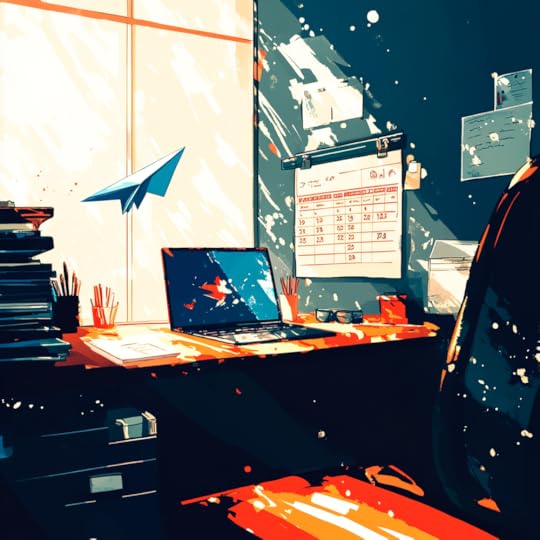
There was a pause between us. I could see him thinking. I could also see him wondering if he had said something wrong. I filled the silence by reminding him of his original question. He had asked me how to learn AI. Not how to monetize it. Not how to build a company. Not how to become a success story.
I told him to keep building. To keep experimenting. To keep launching new projects—every single week, if he could. Not because one of them might work. But because the act of doing is the real learning. Not the videos. Not the podcasts. Not the reading. Not the articles or courses or conversations.
His face lit up. There was a visible shift in his posture. I could feel his excitement begin to return, maybe even deepen. “So,” he asked, “if I just keep trying ideas, one of them will eventually work?”
“No,” I said, again challenging him, without hesitation. “That’s not the point.”
The purpose isn’t to get one of your ideas to work. The purpose is to keep learning. To keep pulling the thread of your own curiosity, without needing to know where it leads.
And maybe that’s the hardest part.
As adults, we become so oriented around outcomes. We want results. We want validation. We want our time to feel productive, our effort to be justified. But learning doesn’t work that way. Not the kind of learning that expands us. Not the kind that lights us up. That kind of learning can’t be scheduled or measured
Play is a word I’ve been coming back to more often lately. Children learn through play not because it’s a strategy, but because it’s an instinct. It’s how they make sense of the world. And when I think back on the moments when I’ve learned the most in recent years, they haven’t been when I was trying to learn. They’ve been when I was trying something new just for the sake of it. When I allowed myself to experiment. To explore. To play.
Learning, I’m starting to remember, is not something to achieve. It’s something to return to. Something to remember. A part of myself I once knew well and, somewhere along the way, misplaced.
The student didn’t need a roadmap. He needed a reminder. And without meaning to, he gave one back to me.
And that is how I learned to learn.

April 4, 2025
How to Write
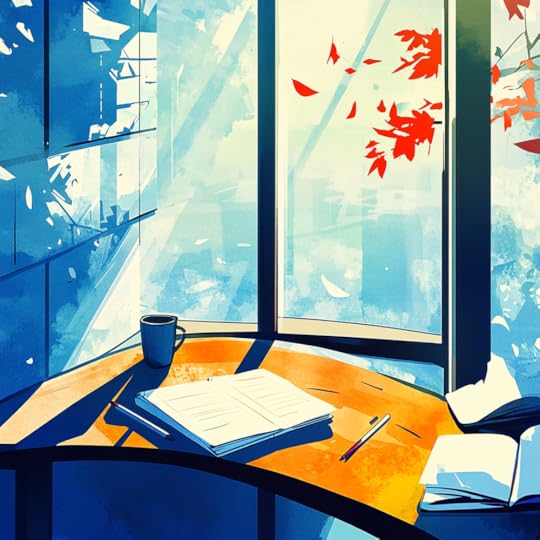
It started, as many things do, with a question from a friend. One I’ve been asked before, and never answered well.
"How do you write so much?"
For a long time, I would say what many say: just start.
It was an easy answer. A quick way to move past the question. But recently, someone challenged me and I started to wonder if that advice has ever really helped anyone. It’s like telling someone who’s never cooked before to just make dinner. Technically true. But not really useful.
So I sat down. I let the question sit with me. And I began to think about how writing has shown up in my own life.

Writing has been one of the most meaningful parts of my adult life. Not because I set out to become a writer, but because I wanted to find a way to express myself. And for me, writing became the most natural form of expression. For others, it may be music, dance, sport, art, cooking or a myriad of other activities. For me, it’s writing.
Over the years, it has taken many shapes. Blog posts, books, newsletters. But also private notes I have never shared. Simple text messages to people I care about. Journal entries that no one else will read. Each of them, in their own way, is a form of writing.
Writing doesn’t have to mean publishing. It doesn’t have to mean performing. It doesn’t even have to mean being read. It can be a quiet act. A way to make sense of what’s going on inside. A way to turn a vague feeling into something that can be seen or understood.
I understand why writing can feel hard, especially for adults. In school, we learned how to write in order to get a grade. We wrote for a teacher, followed a structure, and moved on. We didn’t learn how to write for ourselves. We didn’t learn how to write in a way that was connected to our identity. And we certainly didn’t learn how to write for a wider audience, or how to build the confidence that comes with doing so.
As adults, writing begins to show up again, but in different ways. In texts, emails, reports, presentations. On social media, in bios, in captions. The stakes feel higher. The audience is wider. The expectations are louder. There’s a real fear of being judged. Of being misunderstood. Of being remembered for the wrong thing.
The pressure to be perfect can be overwhelming. If it’s not good, don’t share it. If it’s not perfect, don’t start. And so, many people don’t.
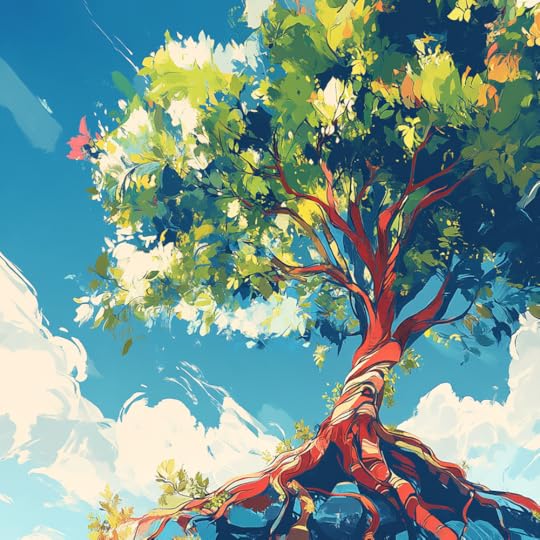
I used to think that writing was the hard part. But over time, I’ve come to see that writing is not the hard part. Thinking is the hard part. When I sit down to write and feel stuck, it’s usually because I haven’t done the work to think something through. Or, more honestly, I haven’t allowed myself to feel what I need to feel.
When I’m clear about what I believe, when I know what I want to say, when I’ve taken the time to sit with an idea or a feeling—then the writing flows effortlessly. The writing takes care of itself.
We all think differently. For some people, clarity comes through conversation, through engaging with others. For others, it comes through solitude, through quiet reflection. For me, it comes in the empty spaces. When I’m in the shower. Driving with no destination. Walking without my phone. Cooking a meal. Cleaning the apartment. These are the times when I notice ideas surfacing from within me. Not because I’m doing nothing, but because I’m tuning into myself
These spaces are often dismissed as unproductive. But they are full of insight. When the noise fades, what’s left is a chance to hear something that’s already there. Something waiting to be heard.
Writing hasn’t changed my life. Writing has helped me change my life. It has helped me see and understand myself more clearly. Hear myself more honestly. Trust myself more deeply. It didn’t happen all at once. But over time, writing has become a way for me to stay close to what matters. A way to remember who I am.
So when I’m asked how to write, I no longer say: just start. Now I say: make space.
Make space to think. To feel. To listen. That’s where writing begins. Because the words are already within. They just need a way out.
And that is how I learned to write.




